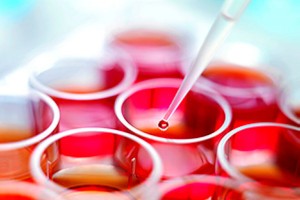Guest Editors:
Kunaal Dhingra: All India Institute of Medical Sciences, India
Paulina Maria Strzelecka: Charité-Universitätsmedizin Berlin, Germany


Guest Editors:
Kunaal Dhingra: All India Institute of Medical Sciences, India
Paulina Maria Strzelecka: Charité-Universitätsmedizin Berlin, Germany


Kunaal Dhingra: All India Institute of Medical Sciences, India

Paulina Maria Strzelecka: Charité-Universitätsmedizin Berlin, Germany

Such technological advances hold the key to unlock the complexity of cellular functions and shed light on pathways perturbed during pathogenesis, ultimately facilitating the discovery of potential therapeutic interventions. By using and further developing single-cell omics, microfluidics, stem cell technologies, genome editing, and high-throughput screening, we can gain unprecedented insights into cellular behavior, molecular mechanisms, and gene regulatory networks. Progress within cell technologies contributes to the development of innovative interdisciplinary approaches for human medicine and healthcare. Constantly improving disease modeling through advanced cell technologies has the potential to transform the way we approach medical challenges.
To showcase the current technological progress and applications of new cell technologies, BMC Biotechnology presents the collection, ‘Cell technologies: advances and applications’. This collection supports and aligns with the objectives of The United Nation’s Sustainable Development Goal 3 (SDG3; ‘Good health and well-being’), which aims to ‘Ensure healthy lives and promote well-being for all at all ages’.
Our collection highlights research covering a broad range of topics including, but not limited to:
Image credit: Tek Image / Science Photo Library
Chemical transfection is a widely employed technique in airway epithelium research, enabling the study of gene expression changes and effects. Additionally, it has been explored for its potential application i...
Exploration of whether circRNAs in the skin of systemic sclerosis (SSc) model mice interact with 4E-BP1 protein to mediate the mTOR signaling pathway to regulate SSc fibrosis is crucial to identify homologous ...
Hepatitis B virus (HBV) clearance depends on an effective adaptive immune response, especially HBV-specific T cell-mediated cellular immunity; however, it is difficult to produce enough HBV-specific T cells ef...
Crimean-Congo hemorrhagic fever (CCHF) is a tick-borne zoonotic disease that presents with severe hemorrhagic manifestations and is associated with significant fatality rates. The causative agent, Crimean-Cong...